An enriching adventure like no other awaits gay tourists in Morocco, with the exquisite and diverse Moroccan cuisine. Here, influences from Spain to Timbuktu have converged over centuries to create a harmonious gastronomic heritage. The culinary journey not only offers a collision of flavors but also provides an insight into the heart of Moroccan life. Every new taste, every novel scent, broadens the understanding of a country where food serves as a gateway to its rich heritage and diverse cultural influences.
The dining experience in Morocco is not just about the food; it’s a feast for all senses, where architectural ambiance plays a pivotal role. From the humble tagine shops tucked away in narrow alleyways to ornate riads transformed into exquisite eateries, each place offers a unique experience. It is in these welcoming spaces that gay travelers can savor the fusion of international flavors and Moroccan cuisine, creating a rich tapestry of tastes that reflect the country’s spirited culinary landscape.
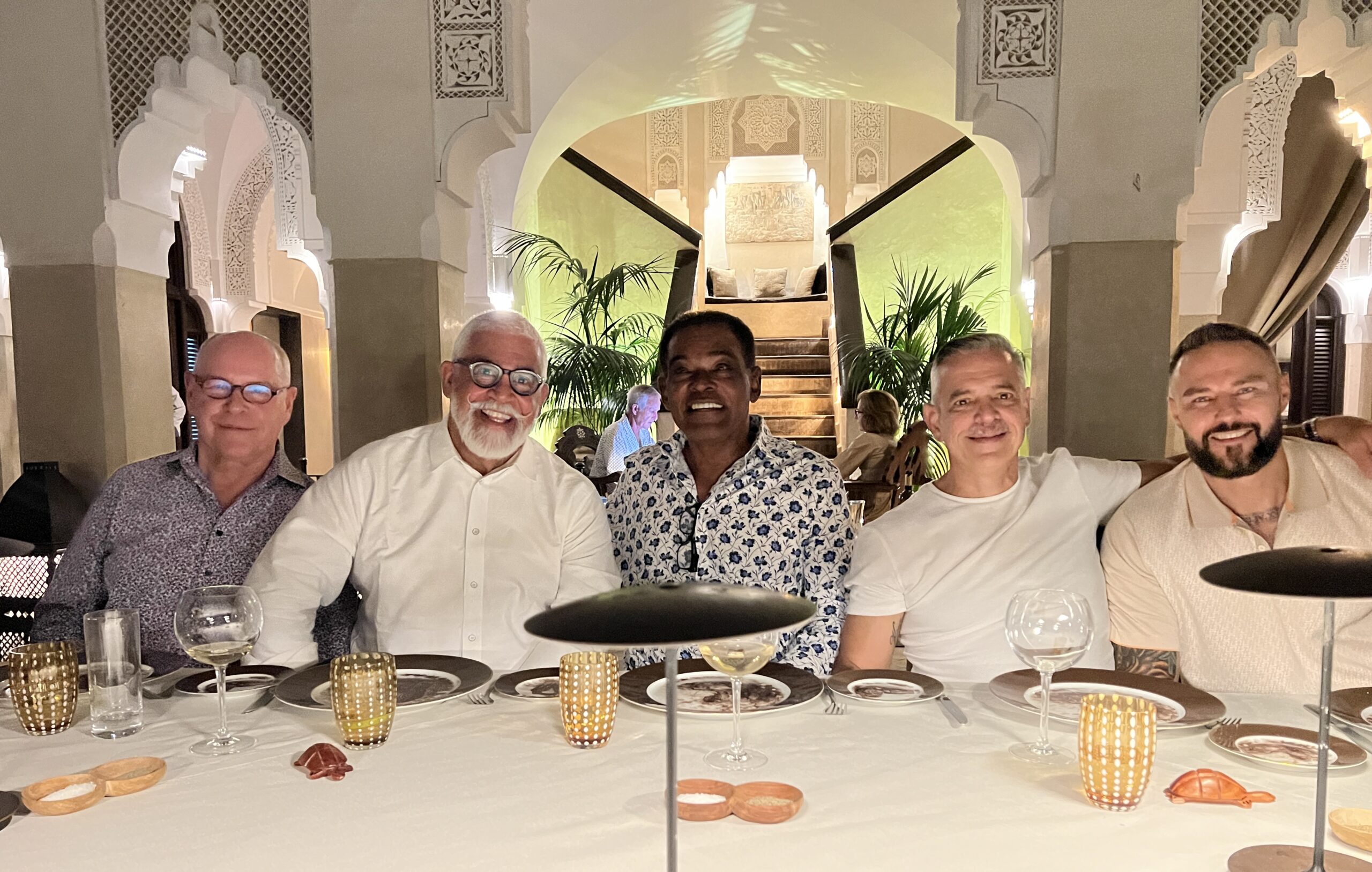
The dining experience in Morocco for Source Travelers
The architectural grandeur of dining spaces in Morocco adds another layer to the culinary journey. Intricate carvings, exquisite tilework, and vibrant textiles adorn these spaces, transporting visitors to a realm inspired by the nation’s historic crossroads status. This visual feast, coupled with the diverse gastronomic offerings, makes each meal a celebration of Morocco’s rich cultural heritage and its welcoming spirit.
For gay tourists in Morocco, the culinary journey is an opportunity to celebrate the cultural evolution of this vibrant land through each bite. From the first sip of mint tea to the last morsel of a savory tagine, visitors are immersed in a rich tapestry of Moroccan life through a symphony of flavors, textures, and aromas that enlighten both senses and heart.
Common Culinary Ingredients: The Essence of Moroccan Cuisine
Venture now into the heart of Moroccan cuisine – its ingredients. These vibrant components, combined with inimitable culinary craftsmanship, create a flavor profile that is undeniably and uniquely Moroccan. Each ingredient, from the humblest grain to the most exotic spice, tells a story of the country’s rich culture and history and contributes to the immersive sensory experience that is Moroccan cooking.
Spices
Moroccan spices are the soul of its cuisine. They are not just ingredients but storytellers that narrate tales of Moroccan heritage in each bite. Ras el hanout, a blend of over a dozen spices, is a cornerstone of this culinary tradition, lending depth and warmth to Moroccan dishes. Cinnamon, with its sweet, pungent aroma, often graces Moroccan desserts and savory dishes alike. Saffron, the golden threads harvested from the crocus flower, imbues dishes with a distinctive hue and subtle flavor. Cumin, with its earthy tones, and paprika, with its smoky sweetness, add further layers of complexity. These spices, among others, work in harmony to create the rich, flavorful tapestry that is Moroccan food.
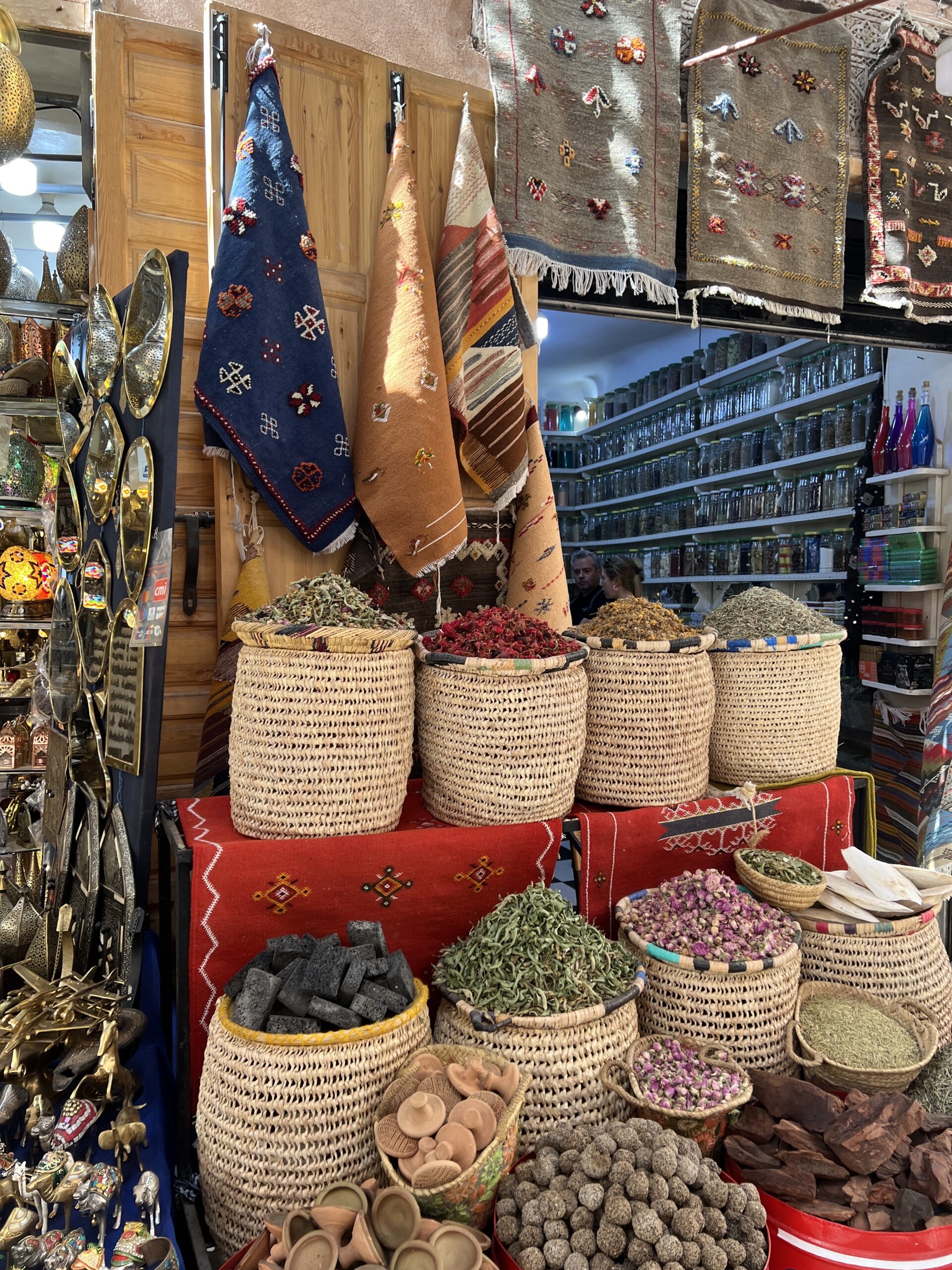
Olive Oil
Moroccan cuisine celebrates olive oil as its main cooking fat, a liquid gold hailing from the sun-drenched olive groves of the country. This Mediterranean influence bestows a characteristic richness, depth, and healthful twist to Moroccan dishes.
Preserved Lemons and Olives
These are the unsung heroes of Moroccan cuisine. Preserved lemons, with their unique tangy-salty flavor, and olives, with their briny punch, serve as potent flavor enhancers. They add an unexpected twist to dishes, elevating the ordinary to extraordinary.
Meat
Morocco’s passion for meat is reflected in its wide array of dishes. Succulent lamb slow-cooked in tagines, spiced chicken roasted to perfection, or beef simmered with prunes – each creation offers an exciting exploration of taste and texture.
A significant aspect of Moroccan culinary tradition is its respectful approach to meat consumption. Embracing the concept of nose-to-tail eating, Moroccan cuisine honors the whole animal by utilizing parts that are often overlooked in many other cultures.
This philosophy is evident in dishes like Tehan, where the head of a sheep or lamb is slow-cooked and savored, celebrating the flavors and textures of every part, from the brain to the cheeks. Other delicacies include liver, kidneys, and even intestines, prepared with a blend of spices that enhance their unique flavors. This approach not only reflects a deep respect for the animals but also aligns with sustainable cooking practices, ensuring minimal waste and a greater appreciation for the food on the table.
Vegetables
The Moroccan table bursts with the vibrant colors and flavors of locally sourced vegetables. From the humble chickpea to the versatile eggplant, the sweet pumpkin to the crisp bell pepper – they contribute to the luscious variety and healthful aspect of Moroccan cuisine, bringing a Mediterranean freshness to the gastronomic scene.
Moroccan Food You Simply Have to Try
Signature Dishes
- Tagine: Named after the conical clay pot it’s cooked in, tagine is a slow-cooked stew brimming with tender meat (often lamb or chicken) and a symphony of vegetables. The secret lies in the medley of spices and the time-honored cooking technique that unlocks layers of robust flavors.
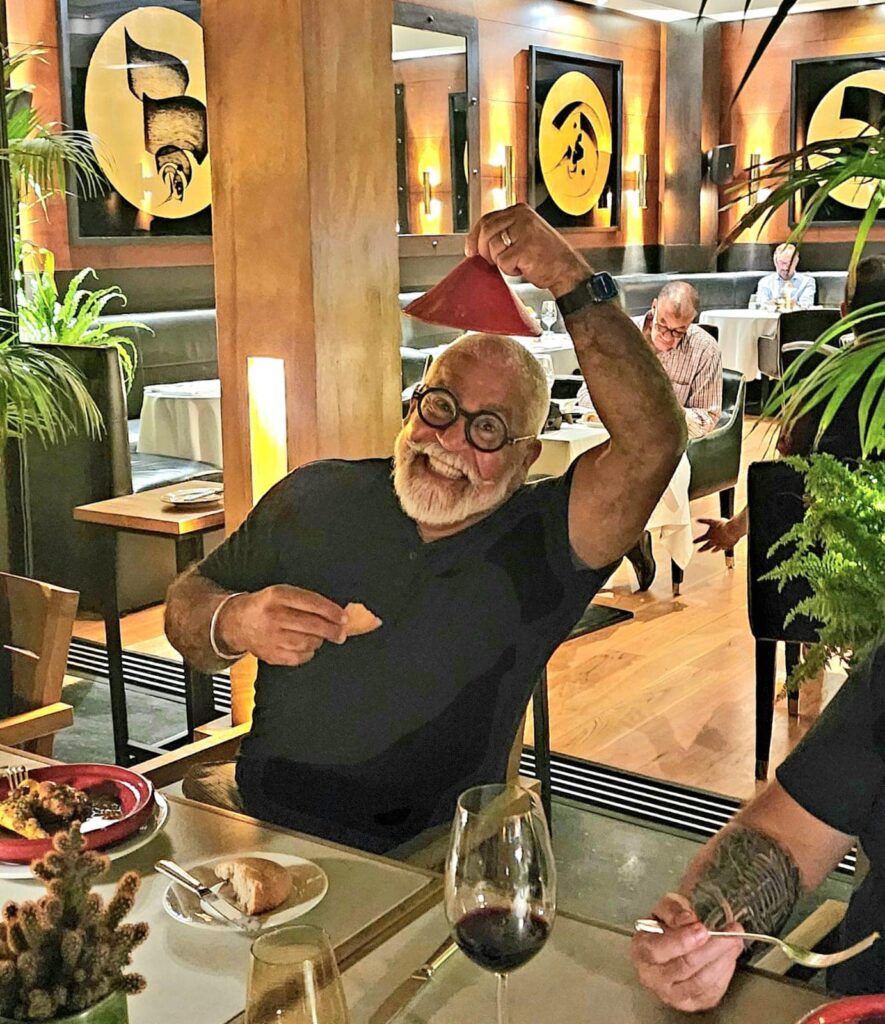
- Couscous: A quintessential Moroccan dish, couscous features petite grains of semolina cooked to fluffy perfection, typically adorned with a variety of vegetables, meats, and a generous drizzle of richly spiced broth. Friday couscous is a ritual, a celebration of flavors and family.
- Pastilla or Bastilla: A sublime marriage of sweet and savory, pastilla is a delicate pastry filled with spiced pigeon or chicken, layered with crispy, buttery filo, and dusted with cinnamon and powdered sugar. This dish is a fascinating testament to Andalusian influence on Moroccan cuisine.
- Harira: This hearty soup, traditionally served to break the fast during Ramadan, is a wholesome blend of lentils, chickpeas, tomatoes, and meat, seasoned with a fragrant mix of herbs and spices.
- Rfissa or Trid: A hearty, comfort dish often served at celebrations, Rfissa features shredded pancakes or bread soaked in a rich, spiced chicken and lentil broth, heavily laden with fenugreek, saffron, and ras el hanout.
- Kefta Tagine: This popular dish marries succulent meatballs made from ground beef or lamb with a zesty tomato sauce, often crowned with poached eggs.
- Tehan: A traditional Moroccan dish that is not for the faint of heart, Tehan is essentially the slow-cooked head of a sheep or lamb, seasoned with a variety of Moroccan spices. It’s often served as a communal dish, where diners can enjoy the succulent cheek meat, tongue, and other parts of the head. In some places, you might also find it served as a sandwich, with pieces of the tender meat placed in a Khobz with herbs and spices.
- Fish Chermoula: Dive into the coastal flavors with this zesty dish. Fresh fish marinated in chermoula – a mix of herbs, lemon, and spices – and then grilled or baked, offering a light yet flavor-packed delight.
- Moroccan Salads: A kaleidoscope of options, from carrot and orange salad to tomato and bell pepper with preserved lemon, these salads are a crisp, fresh counterpoint to the rich, spiced main dishes, a whisper of the Moroccan fields.
- Bissara: A quintessential Moroccan comfort food, Bissara is a smooth, hearty soup made from pureed fava beans or split peas, delicately flavored with garlic, cumin, and olive oil.
- Khobz: This traditional Moroccan bread is a staple in every meal and an embodiment of Moroccan hospitality. Unlike the thin, flatbreads common in other cuisines, Khobz is round, leavened, and baked to a golden-brown perfection. The sturdy, yet soft texture of Khobz makes it an ideal vessel for a variety of fillings. You might find Khobz stuffed with grilled meats like kefta or chicken, or “mixed meat” including brain and liver, seasoned with a harmony of spices, and complemented with fresh vegetables and a drizzle of zesty sauce. Vegetarian options often include a medley of grilled vegetables, cheese, or even omelettes, spiced and herbed to perfection. Khobz replaces the fork. A piece of khobz is used to scoop up the food from the tagine.
Desserts
- Dates: A cherished gem of Moroccan cuisine, dates are not only a sweet treat but also a symbol of hospitality. These succulent fruits, often served with tea or as part of a dessert platter, are revered for their rich, caramel-like sweetness and velvety texture.
- M’hanncha: This coiled, snake-like pastry, affectionately known as the ‘Moroccan serpent’, is filled with a sweet almond paste, delicately flavored with orange flower water and cinnamon, then encased in crispy filo. This dessert offers a delightful crunch, followed by a warm, sweet filling – a fitting finale to a Moroccan meal.
- B’stilla au Lait: A sweet twist on the classic Bastilla, this version is a dessert, where the pastry embraces a creamy, fragrant milk filling, spiced with cinnamon and orange blossom water—a poetic end to a Moroccan feast.
- Sfenj: These airy, doughnut-like pastries are a testament to the simple joy of Moroccan street food. Dusted with sugar or dipped in honey, they are a sweet, chewy delight, best enjoyed with a cup of mint tea.
Embracing Morocco Through Its Culinary Wonders
Embarking on a gastronomic adventure in Morocco transcends the usual tourist activities of exploring nature or visiting landmarks. It’s an intimate voyage into the heart of Moroccan culture through its rich and varied cuisine. This journey is crucial for understanding the country’s identity, as each dish reflects the intricate tapestry of its historical and cultural influences.
Moroccan cuisine is a sensory delight, offering more than just a taste of traditional flavors. It’s an exploration into the soul of the nation. The earthy, rustic flavors of Berber cuisine, the aromatic richness of Arab spices, and the fresh, vibrant touch of the Mediterranean, and historic Jewish recipes all converge in Moroccan dishes, telling stories of the country’s past and present. This culinary diversity is a reflection of Morocco’s unique position as a crossroads of civilizations.
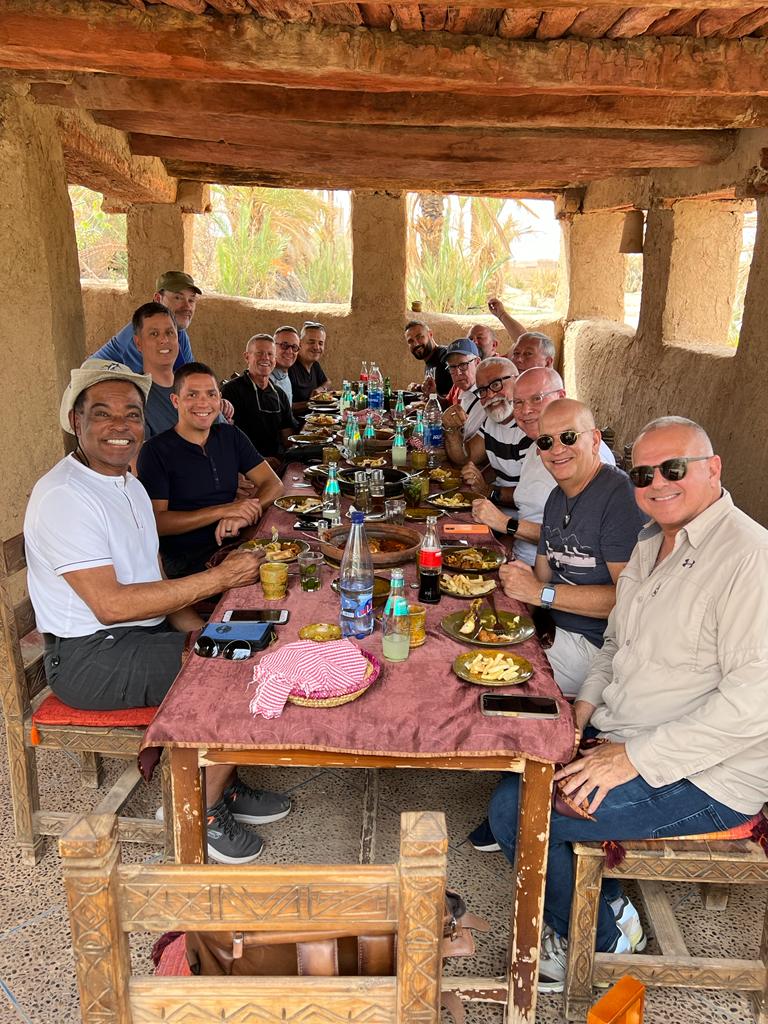
Source Travelers savoring a meal in Morocco
Your gay travel to Morocco is an opportunity to engage with the country’s heritage on a deeper level. It’s not merely about enjoying delicious food; it’s about experiencing the essence of Moroccan life. The variety of spices and ingredients, from saffron to olive oil, not only add flavor to these Moroccan dishes but also provide insights into the country’s agricultural and trade history. Each meal is a lesson in Morrocan geography, history, and culture.
The importance of this culinary journey lies in its ability to offer an authentic experience of Morocco. Dining in a traditional riad, tasting the layers of flavor in a slow-cooked tagine, or sipping on mint tea in a bustling market – these are moments that capture the true spirit of Morocco. They provide an immersive experience that connects travelers to the everyday lives of Moroccans, allowing for a deeper appreciation of their customs and traditions.
A gastronomic adventure in Morocco is a journey through time and culture. It’s an essential aspect of travel that goes beyond sightseeing, offering a deeper, more intimate connection with the country. For LGBT travelers, this journey through Morocco’s culinary delights is a way to experience the country’s culture at its most authentic and vibrant. By engaging with the local cuisine, travelers gain insights into the heart of Moroccan life, its history, and its people, enriching their travel experience in a way that no other activity can.

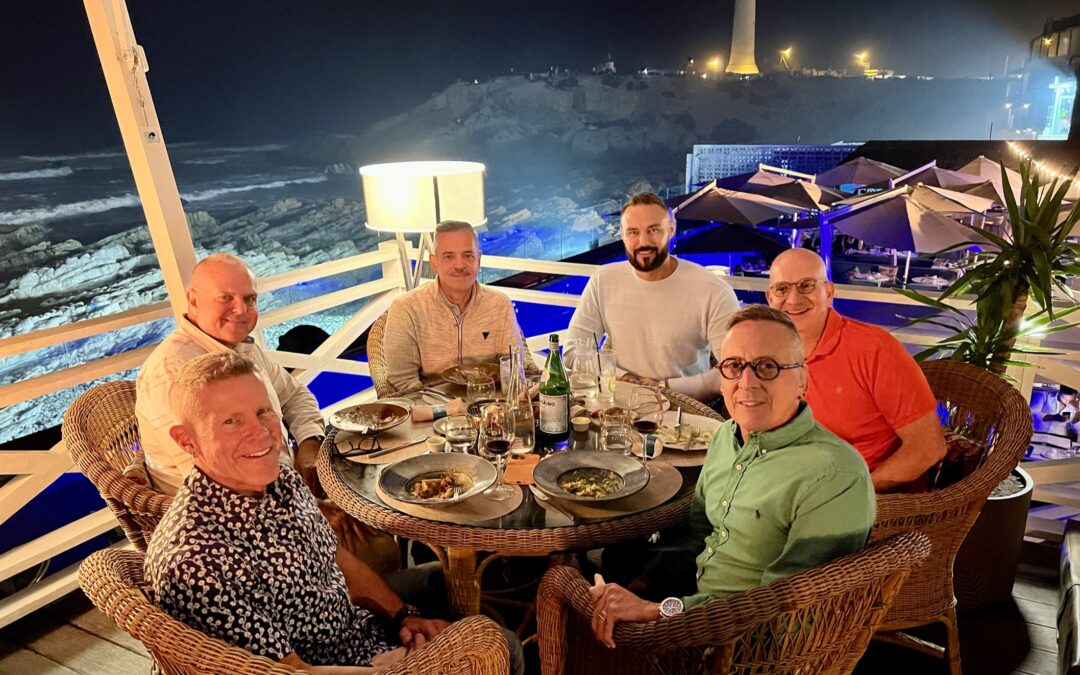
Call Us: 305-672-9779